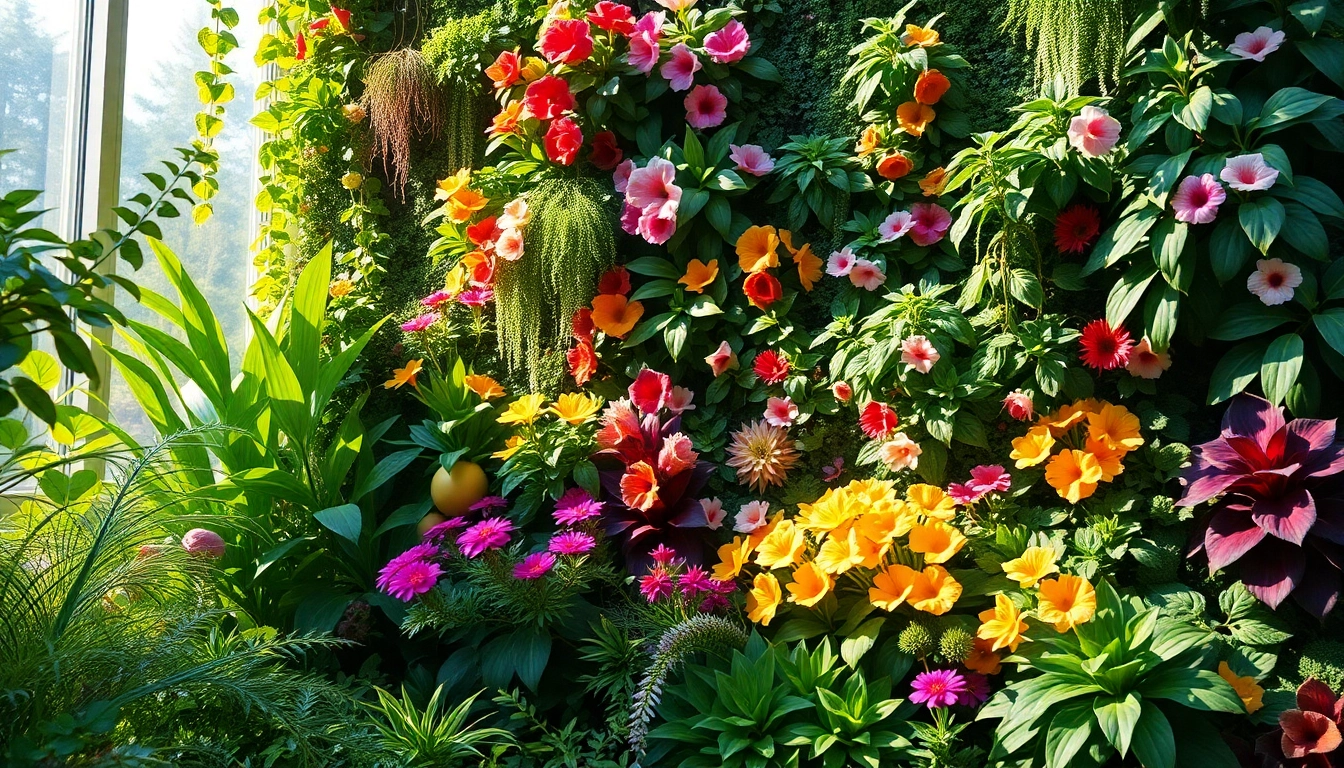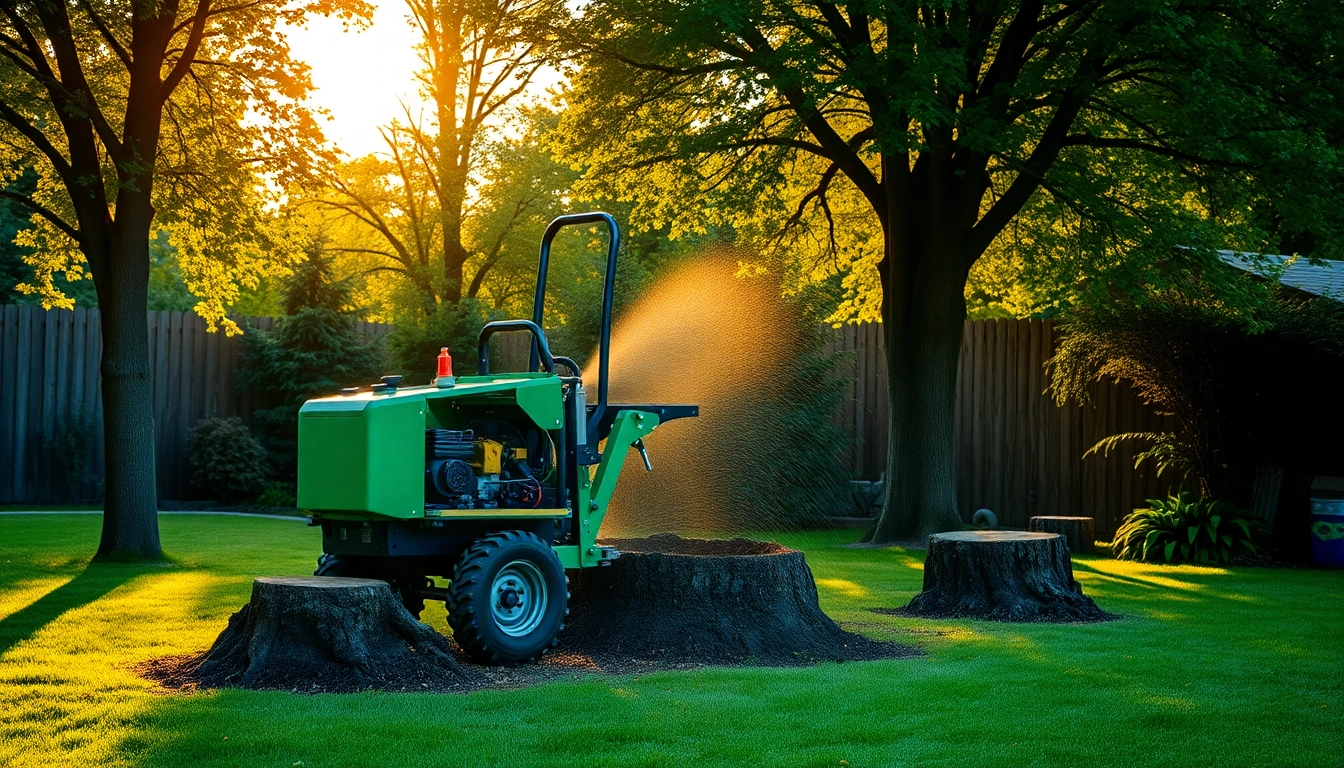Understanding Vertikale Gärten: The Basics
In recent years, urban spaces have increasingly embraced the concept of vertikale Gärten, or vertical gardens, as an innovative method of integrating nature into densely packed environments. These vertical gardens not only beautify spaces but also provide numerous ecological, psychological, and practical benefits. In this section, we will define what vertical gardens are, explore their advantages in urban settings, and discuss plant choices that thrive in vertical arrangements.
What Are Vertikale Gärten?
Vertikale Gärten, also known as living walls or green walls, are structures that utilize vertical space to grow plants. These systems can range from simple wall-mounted planters to intricate hydroponic systems that support a variety of flora. By employing techniques that allow plants to be grown vertically rather than horizontally, these gardens make it possible to increase greenery in areas where horizontal space is limited.
Vertical gardens can be created using various methods, including wall planters, trellises, and modular planters, which can be installed on walls, fences, and even freestanding structures. The plants used in vertical gardens can include herbs, flowers, and even small shrubs, providing both aesthetic appeal and functional benefits.
Benefits of Vertical Gardens for Urban Living
One of the most significant advantages of vertical gardening in urban environments is space efficiency. As cities expand and natural landscapes diminish, finding ways to integrate greenery becomes crucial. Vertical gardens provide a solution by allowing inhabitants to cultivate plants in areas previously deemed uninhabitable for gardening.
In addition to space efficiency, vertical gardens offer substantial ecological benefits. They contribute to improved air quality by filtering pollutants and carbon dioxide, while also providing insulation for buildings. These gardens can help regulate temperature and reduce energy costs associated with heating and cooling.
Psychologically, the presence of greenery contributes to mental well-being. Studies have shown that exposure to nature can reduce stress, increase feelings of happiness, and enhance overall quality of life. Vertical gardens in urban settings bring a piece of nature to the city, creating a soothing environment that promotes relaxation and productivity.
Moreover, vertical gardens can support local biodiversity. By incorporating native plants, cities can create habitats for various pollinators and other wildlife, reinforcing ecological stability in increasingly urbanized landscapes.
Popular Plant Choices for Successful Vertikale Gärten
The success of a vertical garden heavily relies on the selection of the right plants. Different plants have varying growth habits, sunlight needs, and water requirements, which are critical factors to consider when designing a vertical space.
Some popular choices for vertical gardening include:
- Succulents: Low maintenance and drought-resistant, succulents thrive in various conditions, making them ideal for vertical gardens.
- Herbs: Culinary herbs such as basil, mint, and thyme are excellent for vertical gardens, providing fresh ingredients for cooking while also offering delightful scents.
- Ferns: Ideal for shady areas, ferns add a lush, green texture to living walls.
- Flowering Plants: Flowers like begonias and petunias add vibrant colors to a vertical garden, enhancing its aesthetic appeal.
- Climbing Plants: Vines such as ivy and clematis can utilize vertical spaces effectively, creating a natural tapestry.
By carefully selecting plants that complement each other in terms of growth patterns and environmental needs, urban gardeners can create thriving vertical gardens that are not only beautiful but also sustainable.
Designing Your Own Vertikale Gärten
Creating your vertical garden involves thoughtful design and planning. From location selection to the tools and materials needed, every step is essential to ensure a successful garden installation. In this section, we provide a detailed guide to designing your own vertical garden.
Choosing the Right Location for Your Vertical Garden
The location of your vertical garden greatly influences its growth and health. Consider the following factors when selecting a spot:
- Sunlight: Ensure the area receives adequate sunlight based on the needs of your chosen plants. Some plants thrive in full sun, while others prefer partial shade.
- Accessibility: The garden should be easily accessible for maintenance tasks like watering and harvesting.
- Structural Support: Ensure that walls or surfaces can support the weight of the vertical garden, including the soil, water, and plants.
- Visibility: For aesthetic purposes, consider placing the vertical garden where it can be enjoyed from various angles.
Essential Tools and Materials for Building
Before starting your vertical garden project, gather the necessary tools and materials. Here’s a checklist:
- Planters/Trellises: Choose the type of planter system that suits your design. Options range from wall-mounted planters to freestanding frames.
- Soil: Quality potting mix is essential for healthy plant growth.
- Watering System: Depending on the size of your garden, consider an automatic drip irrigation system or a simple watering can.
- Tools: Basic gardening tools like gloves, pruning shears, and a trowel will help in planting and maintaining your garden.
Step-by-Step Guide to Installation
Once you have chosen a location and gathered your materials, follow these steps for a successful installation:
- Install the Structure: Secure your planters or trellises to the wall or support structure, ensuring stability.
- Add Drainage: Ensure that your planters have adequate drainage to prevent waterlogging.
- Fill with Soil: Add the potting mix to your planters, leaving enough space for the root systems of your plants.
- Plant: Arrange your chosen plants based on their sunlight and water needs, creating a harmonious layout.
- Water: Initially, water the plants thoroughly to help them settle into their new environment.
- Monitor and Adjust: Observe the plants’ growth and make adjustments as necessary, including supports for climbing plants or repositioning plants for better light coverage.
Maintenance Tips for Healthy Vertikale Gärten
Maintaining a vertical garden is vital for its longevity and health. Regular maintenance tasks can help prevent common issues while keeping your garden looking vibrant. Below are some essential maintenance tips to enhance your vertical garden’s vitality.
Watering Techniques for Vertical Gardens
Watering a vertical garden can be different from traditional gardening due to its height and structure. Here are some tips for effective watering:
- Drip Irrigation: Consider installing a drip irrigation system for even moisture distribution and reduced waste.
- Soil Check: Always check the soil moisture levels before watering to prevent overwatering, which can lead to root rot.
- Water the Base: Ensure your system allows water to reach the plants’ roots effectively, especially for larger, more varied plants.
Fertilization and Soil Management
Maintaining the health of the soil is crucial in a vertical garden. Since the plants are often in confined spaces, nutrients can be depleted quickly. Here are some tips for fertilization:
- Use Organic Fertilizers: Incorporating organic matter such as compost or worm castings can enhance soil health.
- Regular Testing: Regularly test the soil pH and nutrient levels to adjust fertilization practices accordingly.
- Liquid Fertilizers: For quick nutrient uptake, use liquid fertilizers biweekly during the growing season.
Managing Pests in Your Vertical Setup
Like other gardens, vertical gardens can encounter pest issues. Address any pest problems as soon as they are identified using the following strategies:
- Regular Inspections: Frequent checks for signs of pests will help in early detection.
- Natural Remedies: Consider using neem oil or insecticidal soaps to control infestations naturally without harming beneficial insects.
- Cultural Practices: Implement crop rotation and diversity to reduce pest populations and increase resilience.
Advanced Techniques for Creative Vertikale Gärten
Once you have mastered the basics of vertical gardening, you may want to explore advanced techniques to maximize your garden’s potential. Here, we address incorporating hydroponics, utilizing limited spaces, and aesthetic customization.
Incorporating Hydroponics into Vertical Gardening
Hydroponics is an innovative method of growing plants without soil, relying instead on nutrient-rich water solutions. This technique is particularly advantageous for vertical gardens as it maximizes space and minimizes the risk of soil-borne diseases. Here’s how to incorporate hydroponics:
- Choose a Hydroponic System: Options include nutrient film techniques (NFT), deep water culture (DWC), or aeroponics.
- Set Up the System: Establish the necessary water circulation and nutrient solution delivery mechanisms according to the type of hydroponic system selected.
- Select Fast-Growing Plants: Opt for leafy greens such as lettuce or herbs, which typically grow rapidly in hydroponic setups.
- Monitor Nutrient Levels: Regularly check and adjust nutrient levels and pH to ensure optimal plant growth.
Utilizing Vertical Space in Limited Areas
For those with limited horizontal space, vertical gardening can transform the tiniest of areas into lush, green havens. Consider these creative strategies:
- Vertical Frames: Use frames that attach to walls to hold multiple tiers of plants securely.
- Window Boxes: Utilize external windowsills or balconies to place planters that can enrich your living space.
- Stackable Planters: Use stackable or modular systems that can be configured for maximum plant density.
Customizing Your Vertical Garden Aesthetically
Your vertical garden can be as much about aesthetics as it is about functionality. Enhancing the visual appeal can make a significant difference in the overall impact it has in your space:
- Color Coordination: Choose plants that offer a variety of colors, textures, and heights to create visual interest.
- Artistic Elements: Incorporate decorative elements such as garden ornaments, lights, or trellising to add personal flair.
- Seasonal Adjustments: Change out plants seasonally for fresh colors and interest throughout the year.
Measuring Success: Performance Metrics for Vertikale Gärten
To ensure that your vertical garden is thriving and serving its intended purpose, it is essential to measure its success through various performance metrics. Monitoring growth, environmental impact, and community involvement can offer valuable insights for improvement.
Assessing Growth and Health of Plants
To gauge the success of your vertical garden, regularly assess the growth and health of the plants:
- Growth Rates: Measure growth rates to determine if your garden is flourishing as intended. Track how long it takes plants to reach maturity.
- Visual Inspection: Keep an eye out for signs of stress, such as wilting, discoloration, or stunted growth.
- Foliage Density: Assess leaf density; lush foliage indicates a healthy, robust garden.
Environmental Benefits of Your Vertical Garden
Evaluate the broader environmental impact of your vertical garden by considering metrics such as:
- Air Quality Improvement: Measure the reduction of air pollutants in the vicinity of your garden.
- Temperature Regulation: Monitor changes in temperature around your vertical garden to assess insulation effects.
- Wildlife Attraction: Record the types and numbers of pollinators or wildlife visiting your garden, which indicates ecological benefit.
Community Engagement and Sharing Your Vertical Garden Journey
Sharing your vertical garden experiences can provide inspiration and foster a sense of community. Consider the following approaches:
- Social Media: Document your vertical garden’s journey on platforms like Instagram or Facebook to encourage others to take up gardening.
- Community Workshops: Host workshops to share your knowledge and techniques with others interested in vertical gardening.
- Before-and-After Comparisons: Showcase progress by sharing before-and-after photos, highlighting the impact of your work.



